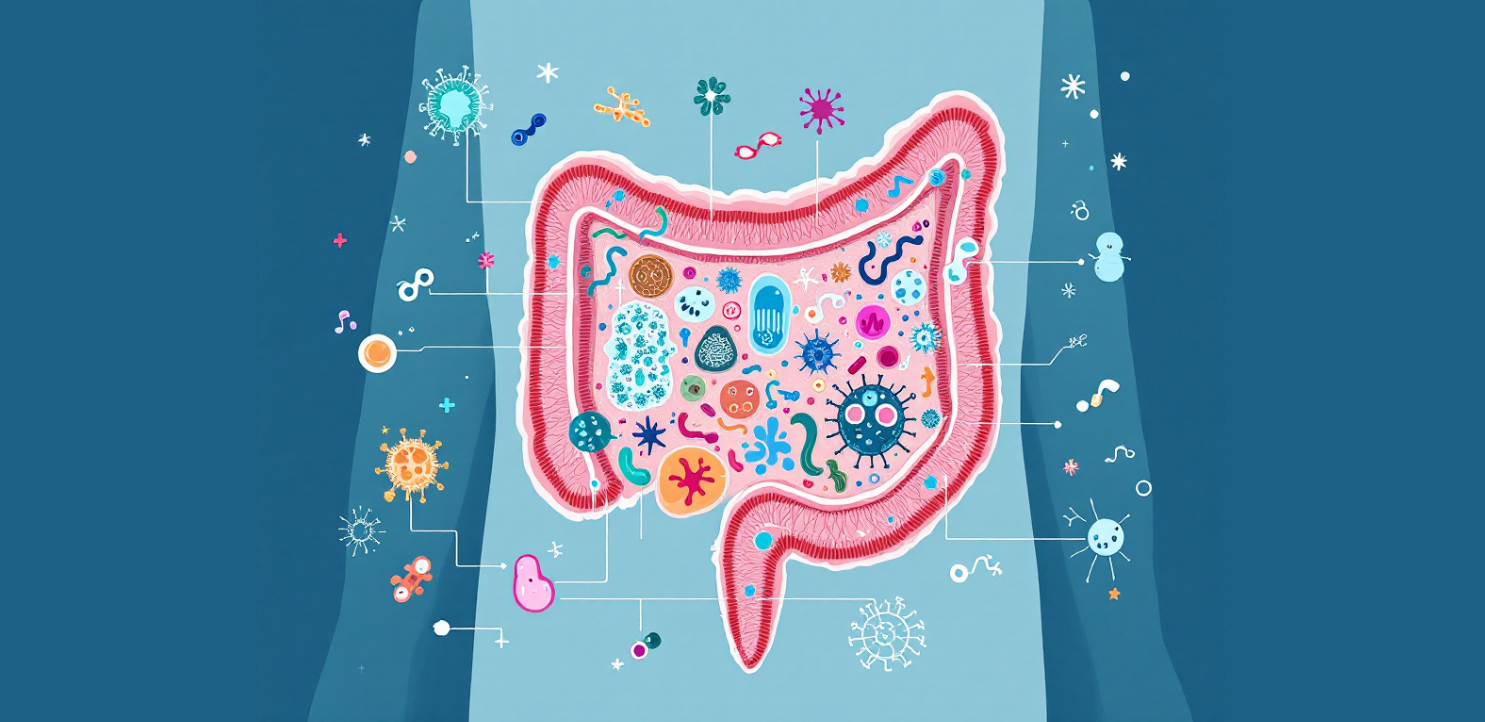The Microbiome as a Critical Variable in Therapeutics

The microbiome is increasingly recognized as a fundamental regulator of host physiology, with the ability to shape immune responses, drug metabolism, and even the outcomes of immunotherapies [1,2]. This recognition has propelled microbiome research from descriptive cataloging into a central component of modern biomedical research and drug discovery. For pharma and biotech, the microbiome represents both an opportunity and a challenge: it can act as a therapeutic target, a biomarker, or a hidden modifier of treatment efficacy and toxicity [3].
Advances in Microbiome Research
Over the past decade, metagenomic and metatranscriptomic sequencing have allowed researchers to identify microbial taxa and catalog the functional gene content of communities at unprecedented depth [4]. These approaches helped establish global microbiome baselines and linked microbial signatures to diverse disease states.
Building on this, multi-omics integration has become common in microbiome studies, combining genomics, metabolomics, and proteomics to link microbial presence with functional impact [5]. Meanwhile, single-cell sequencing and high-throughput culturing techniques have provided fine-grained views of microbial populations and their heterogeneity [6].
Another emerging theme is the role of the microbiome in drug interactions. A growing body of work shows that many non-antibiotic drugs exert unintentional effects on gut bacteria, altering both composition and function [7]. These off-target effects are often overlooked but may critically influence treatment outcomes.
The Limits of Conventional Approaches
While sequencing-based approaches have been transformative, they inherently lose the spatial context of microbes within their native environments. Microbial interactions with host cells, gradients of oxygen and nutrients, and localized immune responses are all blurred when data are derived from homogenized samples [8]. Even single-cell approaches, while powerful, dissociate cells from the tissue structures where interactions take place.
For therapeutic discovery and development, this missing spatial dimension can be a limitation. Drugs that alter microbial niches within the mucosa, or immune responses at the epithelial interface, cannot be fully understood without methods that preserve tissue organization.
Spatial Multi-Omics: A New Frontier
Spatial microbiome technologies address this gap by adding the “where” to the “what.” These methods enable direct visualization of how microbes are positioned relative to host cells, which niches they occupy, and how local interactions drive pathology or therapeutic response [9].
Recent innovations include spatial host–microbiome sequencing, which co-detects host transcripts and microbial 16S signals within tissue sections [10]; spatial metatranscriptomics, which maps active microbial gene expression in situ [11]; and integrated spatial multi-omics, which layers transcriptomics, proteomics, and glycomics to uncover cross-talk between microbes and host systems [12].
The power of these approaches is exemplified by Microbiome Cartography (MicroCart), a framework that integrates spatial proteomics, transcriptomics, and glycomics [13]. Applied in a mouse colitis model, MicroCart revealed findings invisible to bulk approaches: (i) increased local intermixing of bacteria with mucus layers during barrier disruption, (ii) localized loss of microbial diversity, (iii) niche-specific infiltration of macrophages and monocytes, and (iv) tissue-specific shifts in glycosylation linked to microbial presence.
Applied Research Methods in Industry
Several applied methods are already available for translation into industry R&D settings:
- Spatial microbiome mapping in preclinical and translational models using multiplexed imaging and sequencing.
- Probe design and validation to target specific microbial groups with high specificity.
- Multi-omics integration (spatial transcriptomics, proteomics, glycomics) to connect microbial niches with host pathways.
- Data interpretation frameworks that turn complex spatial datasets into actionable insights.
Together, these tools provide actionable strategies for drug developers to understand off-target microbiome effects, identify biomarkers, and improve patient stratification.
To explore the broader implications of microbiome research in therapeutics and beyond, dive into our related articles. Standardizing Microbiome Therapeutics: Challenges and Innovations in GMP Manufacturing and Regulatory Approval examines the critical steps needed to bring microbiome-based therapies from bench to bedside, including harmonization of manufacturing standards and regulatory frameworks. For a deeper look at how microbiome biomarkers are revolutionizing clinical diagnostics, Advancing Microbiome-Based Biomarkers in Inflammatory Bowel Disease (IBD) highlights the latest breakthroughs in noninvasive tools and metaproteomics, offering new avenues for precision medicine. Microbiome’s Role in Patient Care: Advances, Challenges, and Pharmaceutical Opportunities explores the intersection of microbiome science, drug development, and patient-centered care, emphasizing the need for accessible and tailored therapies. And for a fascinating detour into the unseen microbial world around us, 🚇 Little Story of the Microbiome in Public Transportation Systems reveals how urban microbiomes reflect societal dynamics and public health trends.
Share your thoughts, questions, or experiences. Let’s discuss how we can harness this knowledge to improve human health!
References
- Belkaid Y, Hand TW. Role of the microbiota in immunity and inflammation. Cell 157, 121–141 (2014).
- Routy B, et al. Gut microbiome influences efficacy of PD-1–based immunotherapy. Science 359, 91–97 (2018).
- Lloyd-Price J, et al. Strains, functions and dynamics in the expanded Human Microbiome Project. Nature 550, 61–66 (2017).
- Qin J, et al. A human gut microbial gene catalogue established by metagenomic sequencing. Nature 464, 59–65 (2010).
- Ghaemi MS, et al. Multiomics modeling of the immunome, transcriptome, microbiome, proteome and metabolome adaptations during human pregnancy. Bioinformatics 35, 95–103 (2019).
- Eren AM, et al. Resolving microbial populations at the strain level using single-cell genomics. Nat. Rev. Microbiol. 18, 751–763 (2020).
- Maier L, et al. Extensive impact of non-antibiotic drugs on human gut bacteria. Nature 555, 623–628 (2018).
- Qin Y, Wade WG. The neglect of spatial structure in microbiome research. Nat. Rev. Microbiol. 20, 511–524 (2022).
- Lötstedt B, et al. Spatial host–microbiome sequencing reveals niches in the mouse gut. Nat. Biotechnol. 42, 1394–1403 (2024).
- Shi H, et al. Highly multiplexed spatial mapping of microbial communities. Nature 588, 676–681 (2020).
- Saarenpää S, et al. Spatial metatranscriptomics resolves host–bacteria–fungi interactomes. Nat. Biotechnol. 42, 1384–1393 (2024).
- Moses L, Pachter L. Museum of spatial transcriptomics. Nat. Methods 19, 534–546 (2022).
- Zhu B, et al. A multi-omics spatial framework for host–microbiome dissection within the intestinal tissue microenvironment (MicroCart). Nat. Commun.16, 1230 (2025).
